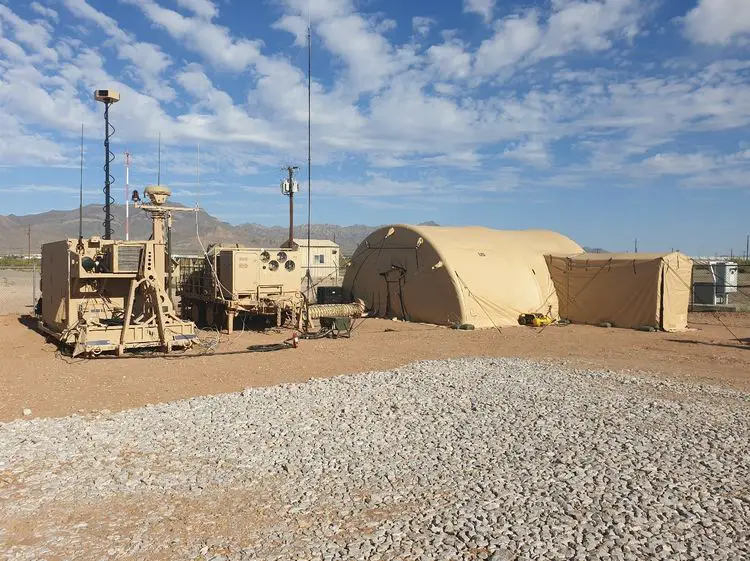The U.S. Army successfully engaged multiple targets during a flight test using the Northrop Grumman Corporation (NYSE: NOC) Integrated Battle Command System (IBCS). The test, conducted as part of the IBCS Limited User Test (LUT), demonstrated IBCS’ ability to maintain continuous track custody of the targets, despite contested environment conditions, by fusing data from multiple sensors.
The test began when two cruise missile surrogate threats were launched and flew at a low altitude in a maneuvering formation through a mountain range towards defended assets. IBCS fused real-time data from all sensors into a single, accurate composite track for each threat. The soldiers were presented with engagement solutions computed by IBCS which were then executed. The soldiers launched two PAC-3 missiles controlled by IBCS that successfully intercepted both threats. IBCS was able to perform all functions successfully despite being subjected to contested environment conditions designed to disrupt the IFCN network, demonstrating the resilience and survivability of the system.
The first of two planned operational flight tests was conducted at White Sands Missile Range, New Mexico by the soldiers from the U.S. Army 3rd Battalion, 43rd Air Defense Artillery (ADA) Regiment. The test’s defense laydown included an Air and Missile Defense task force including two Battery and 1 Battalion engagement operations centers, two Patriot and Sentinel radars, and three Patriot Advanced Capability Three (PAC-3) launchers connected at the component level, to the IBCS Integrated Fire Control Network (IFCN).
“We are extremely pleased with how IBCS performed during this flight test,” said Kenn Todorov, vice president and general manager, combat systems and mission readiness, Northrop Grumman. “We have been working on an extraordinary command and control system in partnership with the U.S. Army, and our goals are the same – to get this capability into the hands of the warfighter as soon as possible.”
IBCS utilizes multiple sensors and effectors to extend the battlespace, engage threats providing 360° protection, increases survivability by enabling early detection and continuous tracking, and delivers transformational warfighting capabilities to defeat an increasingly complex threat.
The Limited User Test, which comprises several tests, is intended to simulate realistic warfighting operations and place performance stresses on the systems to ensure it will perform as intended under the most rigorous circumstances once deployed. This LUT is conducted to inform a Milestone C decision which will transition the IBCS program into the production and operational testing phase.













